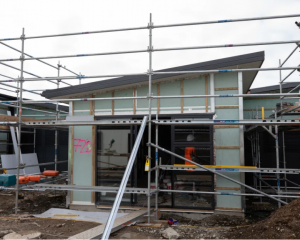An expert monitoring team flew to the city from Hamilton last week, on the same day fed-up Bromley ratepayers told a council meeting the foul smell was ruining their daily lives and making them feel sick.
The specialists tested the type and concentration of gases in the air at a number of places around the plant and neighbouring streets last Thursday.
Christchurch City Council head of three waters Helen Beaumont said the results showed small amounts of hydrogen sulphide from the digesters and oxidation ponds, which was commonly called sewer or swamp gas.
Tests near the ponds also detected methyl mercaptan, a pungent gas that forms when organic material breaks down.
While the readings were well above the odour detection threshold, Beaumont said they remained well within WorkSafe's exposure standards.
"The reassuring news we have received from our initial look at the testing is that there is nothing in the air that poses any physical risk to people's health, although we do acknowledge how mentally tough the situation is for residents who live near the plant," she said.
The test results will be published online once they have been peer reviewed.
Beaumont said further air quality tests would be carried out until the rotting material in the two fire-damaged trickling filters had been removed.
"We know that the stench from the trickling filters increases significantly after rain, so we'll conduct follow-up sampling after the next weather event. We'll also continue odour monitoring until the contractor has removed all of the material from trickling filters," she said.
People who live near the plant have complained of sleepless nights, nausea and headaches and are worried about the health effects of prolonged exposure to the smell.
While council staff told last week's meeting public health officials had not raised any direct concerns about the smell, Canterbury's medical officer of health Dr Cheryl Brunton told RNZ exposure to strong odours could affect people's physical health.
"Exposure to hydrogen sulphide, a gas which may be a component of the odour arising from the damaged trickling filters and the treatment ponds, can cause nausea, tearing of the eyes, and headaches at relatively low concentrations. It may also worsen symptoms in people who have asthma," she said.
"Even if those exposed to the odour do not experience physical health effects, continued exposure to unpleasant or noxious odours can still have an adverse effect on their mental well-being, particularly when they have limited or no ability to avoid on-going exposure."
Dr Brunton said people experiencing health problems as a result of the smell should see their GP.
Monitoring of the odour from the plant - which is coming from the filters and the oxidation ponds - is being carried out by both the city council and Environment Canterbury.
The filter roofs were destroyed in last November's blaze, so when it rains the rotting biomass trapped inside stinks.
The council has warned there is no quick fix, with the process of removing about 26,000 cubic metres of hazardous material from the filters expected to take up to seven months.
In the meantime, the council hopes new aerators will improve the smell from the ponds.
Councillors have pledged to provide fortnightly progress reports on efforts to control the stench, while staff examine ways to support people who are struggling the most.
An Environment Canterbury spokesman said two staff visited the treatment plant twice a week to record their observations about the odour, in addition to reports from the public through the Smelt It app.













